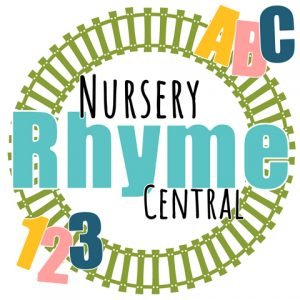As an educator and mother of small and big children, I am always astounded at the educational brilliance of Nursery Rhymes, so much so that I thought I should write an article letting everyone know about ten wonderful ways that nursery rhymes will enhance the learning and development of their child!
According to the National Institute on Deafness and Other Communication Disorders (NIDCD) in the US, a child’s first three years of life is the most intensive period for acquiring speech and language skills.
An environment rich in sights and sounds and exposure to the speech and language of older children and adults fosters the development of such skills.
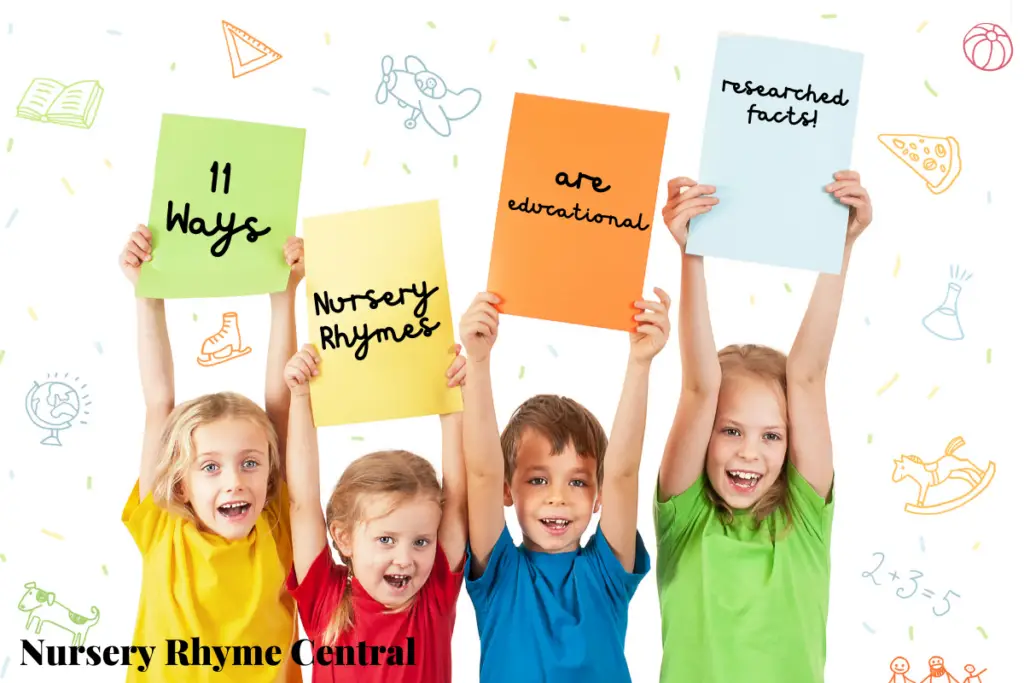
A Few Relevant Terms Explained
The NIDCD distinguishes between voice, speech, and language as follows –
- Voice is the sound made by forcing air through the larynx. It includes a baby’s babbling and gurgling sounds.
- Speech is talking and involves the coordination of muscles of the jaw, larynx, lips, and tongue to produce intelligible words.
- Language is a set of rules for expressing ideas in a way that other speakers of the same language can understand. Language is expressed through speech, writing, signing, or other non-verbal gestures, such as facial expressions.
Phonology: studies the sound patterns in a language or how speech sounds are organized in the mind to convey meaning.
Phonemes: are the smallest units of speech that distinguish one word from another. For instance, the “p” sound in “tap” distinguishes it from the words tat, tab, tad, and tag. Phonological awareness helps with writing skills that come later in a child’s development.
Phonological awareness: in children is demonstrated by their ability to identify words in sentences and understand separate syllables in words. They can tune into the individual word sounds. Phonemic awareness is the ability to notice, think about, and work with individual sounds in spoken words.
Phonics: teaches how letters are connected with sounds and breaking words up into sounds to learn reading and writing. It is more advanced than phonological awareness as it represents the stage at which learners are starting to read and write words of more than one syllable.
Why do we sing nursery rhymes to children?
We sing Nursery rhymes to children as they are educational and help in speech acquisition. They build vocabulary, assist with alphabet learning and language literacy.
Nursery Rhymes teach communication skills, enhance cognitive ability, promote physical development, stimulate social development and music skills while conveying information about the world.
Read on as we unpack each of these below!
1. Nursery Rhymes are Educational as proven by research!

Nursery rhymes have significant educational value for small children. In 2011, researchers Carl Dunst and Diana Meter analyzed the results of twelve studies on five thousand two hundred and ninety-nine preschoolers.
They wanted to assess the relationship between children’s nursery rhyme experiences and knowledge on the one hand and their development of phonological and print-related abilities on the other.
They found that introducing a young child to nursery rhymes has a beneficial influence on their subsequent development of literacy-related skills.
In the 2011 study, nursery rhyme knowledge was gauged by the child’s ability to recite five popular nursery rhymes, while nursery rhyme awareness was measured by the child’s ability to supply the final rhyming word of a nursery rhyme.
The researchers looked at several phonological measures and print-related measures based on previous studies.
Phonological measures included rhyme production, rhyme detection, phoneme awareness, and phoneme detection.
Print-related measures in the 2011 study included alphabet knowledge, letter-sound awareness, name and age writing, vocabulary, reading competence, and story retelling.
Study results demonstrated that the nursery rhyme experiences were more strongly related to the phonological measures than the print-related measures.
However, the children’s nursery rhyme experiences and knowledge were related to three different print-related outcomes.
2. Nursery Rhymes Improve Children’s Speech
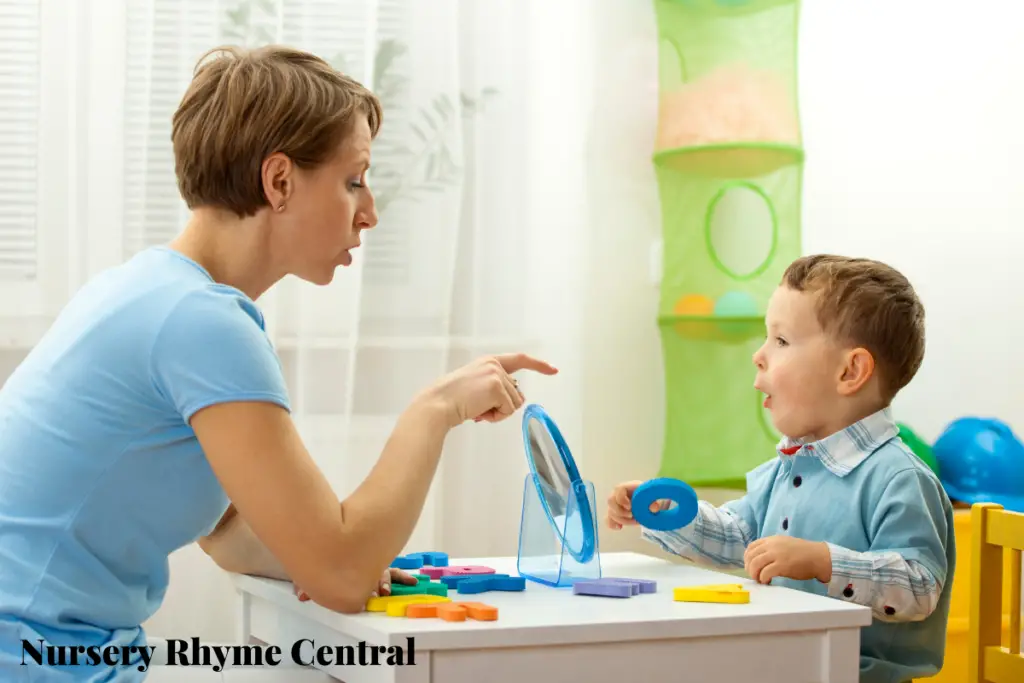
Nursery rhymes teach articulation and pronunciation of words and so help children to improve their speech. They also provide information on intonation.
Hearing nursery rhymes and learning to recite them allows children to form words, recognize phonemes and distinguish between different words that sound similar.
The English language has more than forty sounds but only twenty-six letters, so a child needs to learn not just letters but phonemes too.
Phonological awareness is an integral part of speech acquisition and development and an essential precursor of learning to read.
In the Journal of Language and Literacy Education, L J Harper points out that children exposed to nursery rhymes significantly outperformed children in the control group.
Research has shown that sensitivity to rhyme and alliteration before formal schooling plays a causal role in their subsequent success at reading.
The rhyming words of a nursery rhyme develop a child’s ability to hear words and identify the different sounds.
In so doing, they learn to form the words with their tongues, lips, jaws, and larynx. Phonological awareness is the capacity to manipulate and detect the sound structure of words independently of their meaning and is developed by listening.
Nursery rhymes help a child to discern rhyme, syllables, and alliteration.
Nursery rhymes involve a great deal of repetition, which leads to the development of new neural pathways in a child’s growing brain.
Rohde (2015) points out that for many children, rhyming is the first time their conscious focus is shifted from the meanings of words to the sounds of language.
3. Nursery Rhymes Grow the Number of Words Kids Know!
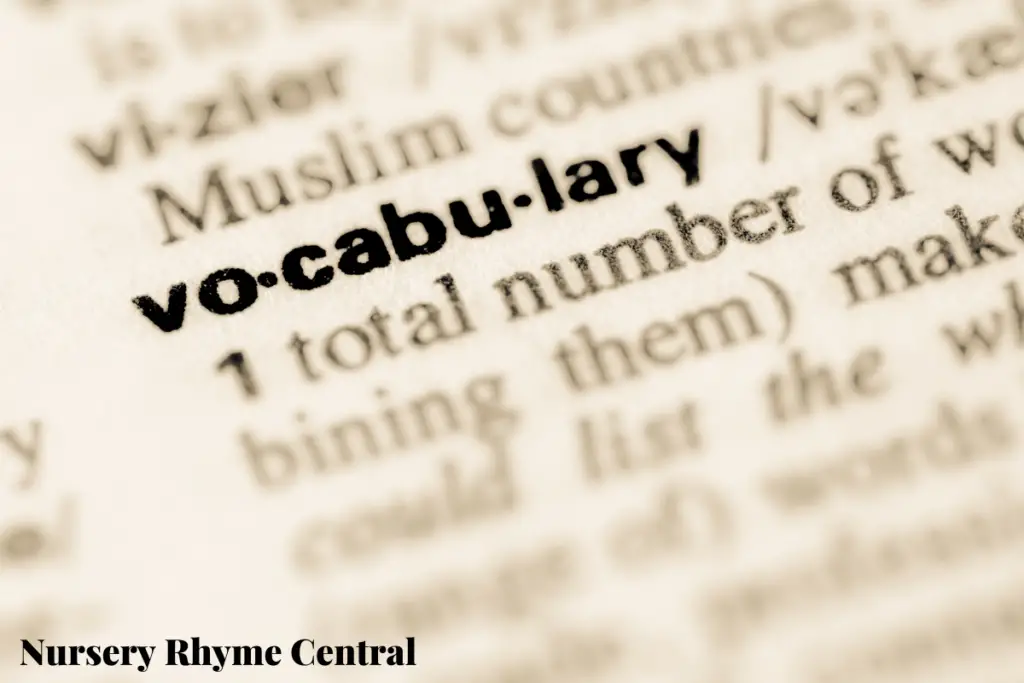
Teaching a child new words using nursery rhymes makes it both fun and interesting. One study over an eight-week period conducted by Hery & Arshad 2020, tested whether nursery rhymes are a better way of teaching English as a second language to Indonesian students than using traditional teaching methods.
There were eighty students between the ages of eight and nine divided into two groups. Only one group was taught using nursery rhymes.
The results showed that nursery rhymes substantially improved the student’s average vocabulary scores compared to their counterparts in the control group.
Students in the nursery rhyme group performed significantly better in matching words to the correct image and matching English vocabulary with words in their local language.
Children encounter many new words in nursery rhymes that they have never heard before.
The advantage of a nursery rhyme is that it provides a context for a new word, i.e., how it is used and mental imagery that can be associated with it.
4. Nursery Rhymes Can Be Used To Teach The Alphabet
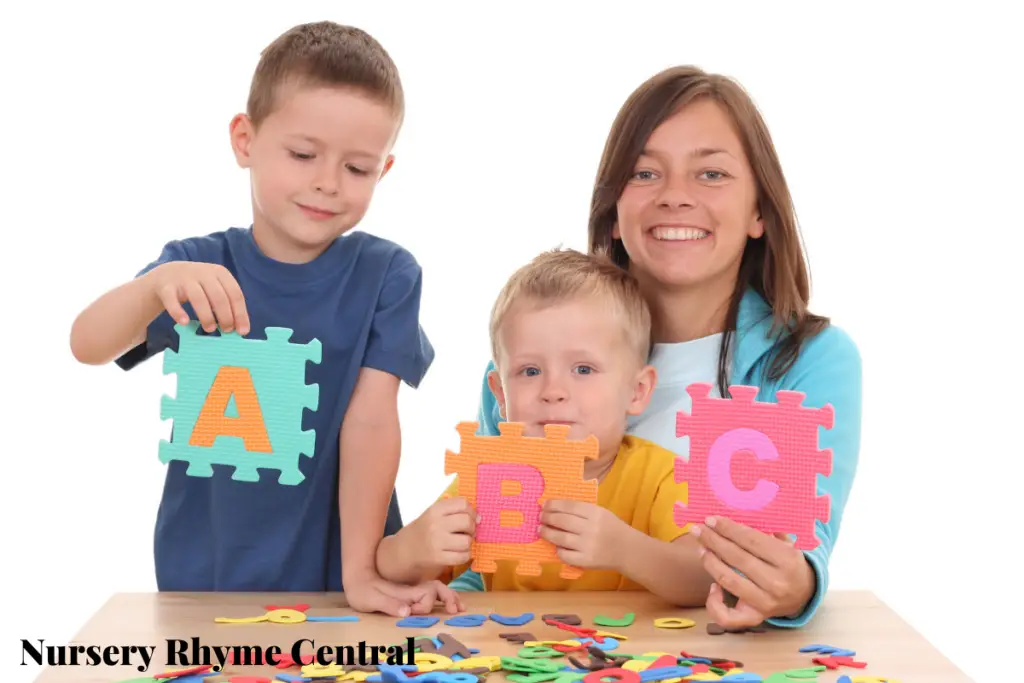
Because a lot of nursery rhymes use alliteration, i.e., emphasize certain letters at the beginning of words, a teacher or parent can use a nursery rhyme to teach phonemes and the alphabet to a child.
Hearing the verse, Peter Piper Picked a Peck of Pickled Peppers, makes a child aware of the letter “p” and its sound. Mother Goose rhymes contain a lot of alliteration. Other examples are Betty Botter bought some butter, and She sells seashells on the seashore.
Learning the alphabet is the first stage of learning to read and write which are literary skills.
Phonics is a teaching method for reading instruction that links sounds to their alphabetic symbols, and nursery rhymes can play a valuable role in phonics.
Alphabetic knowledge is a significant predictor of later reading skills in terms of accuracy and fluency.
Strong letter knowledge facilitates the acquisition of decoding skills and can be taught to children before they reach school-going age. Hearing letter names and sounds and practicing discrimination between different letters and sounds is highly beneficial.
If children do not know letter names or the sounds associated with letters, the ability to decode written words is more challenging to acquire.
Some nursery rhymes, such as the Alphabet song and “A was an Apple Pie, “consciously teach the alphabet, but many others do so less directly.
“A was an Apple Pie” appeared in many books of nursery rhymes in the nineteenth century but goes back to the reign of King Charles II.
5. Nursery Rhymes Develop Reading and Writing Skills
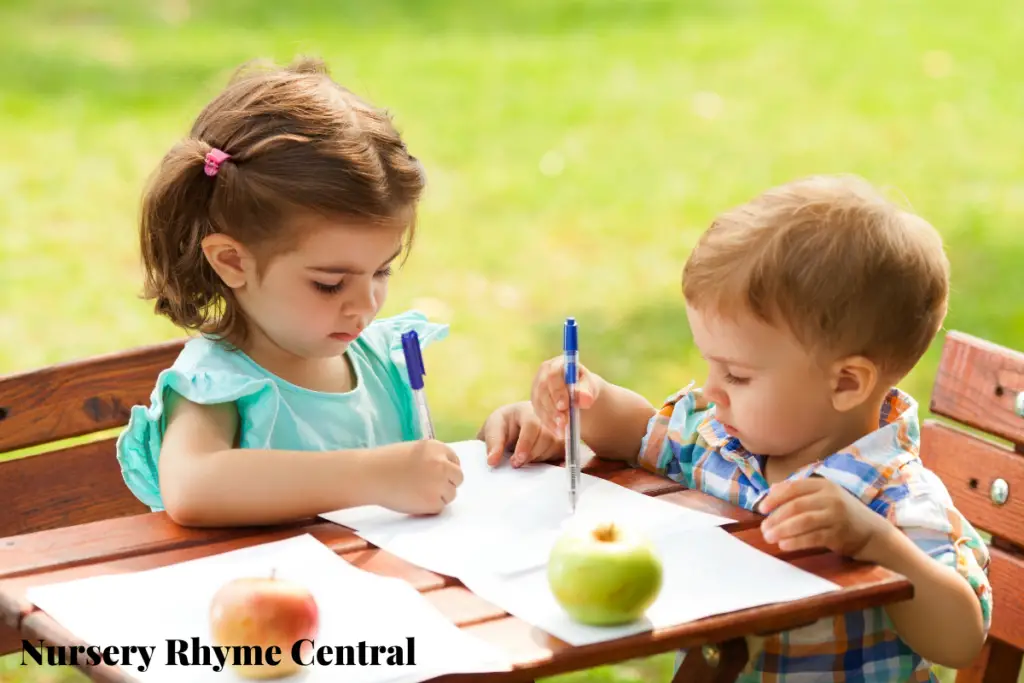
Studies have shown a strong link between knowledge of nursery rhymes and learning how to read.
They offer a child the opportunity to play with words and relate certain words to others because a rhyme emphasizes the phonetic links between the words that rhyme.
Researchers have discovered that early knowledge of nursery rhymes can help a child build awareness of the sound patterns of language and can play a significant role in linguistic and early literacy development.
There is a continuum when learning to read and write that begins with oral language and ends with reading and writing.
In other words, you need to first be able to speak and know how to use language verbally before you can read or write it, and this is where learning Nursery Rhymes and repeating them and practicing oral language is so important in the relationship of the rhymes to reading and writing.
Early skills that assist literacy acquisition include knowledge and ability related to the alphabet, phonological awareness, symbolic representation, and communication. Children develop oral languages by using consistent word patterns and sequences.
They typically start with alliteration and rhyming and then go on to blending and segmentation of phonemes.
- Oral language
- Phonological awareness
- Print awareness
Print awareness involves recognizing and naming letters, identifying the sounds of letters, producing letter sounds, and matching the written letters with their sounds.
It includes a knowledge of book handling, the awareness that printed text conveys a message, and the differences between a word and a letter.
6. Nursery Rhymes Help Develop Communication Skills
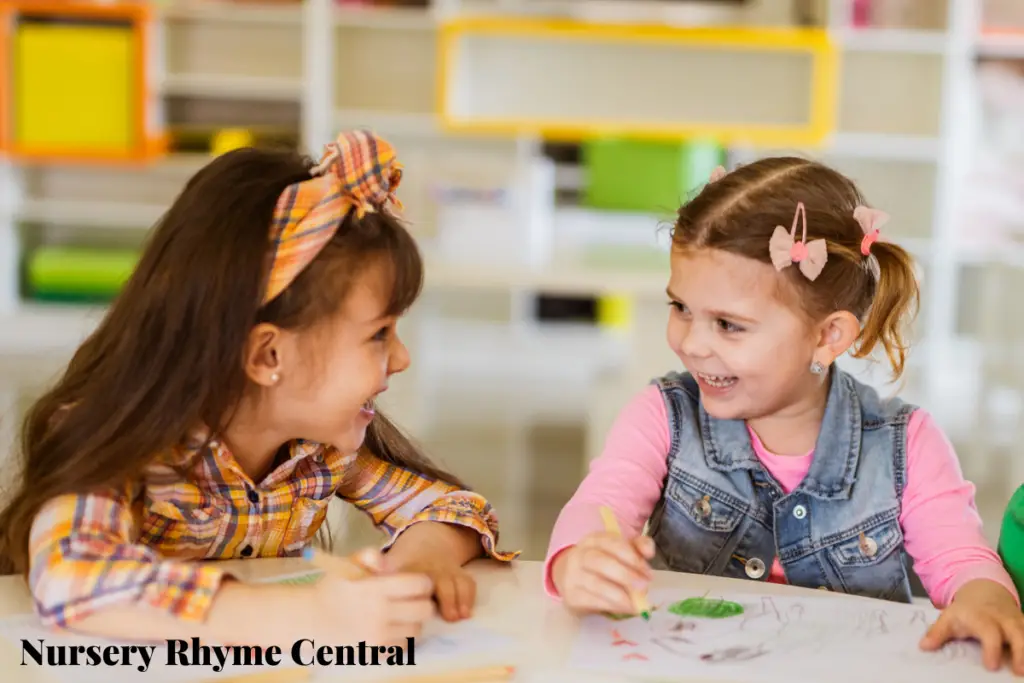
Children benefit from interactions with adults who sing nursery rhymes to and with them.
They learn to make eye contact, mimic facial expressions and watch the mouth of the person reciting or singing the rhyme.
The ability to name and communicate feelings to others is an essential communication skill that can be taught to young children using songs like “If you’re happy and you know it clap your hands”.
Nursery rhymes can also teach empathy with animals and other people.
Little Miss Muffet was frightened by the spider that sat down beside her, while Ding Dong Bell sympathizes with the poor pussy in the well who was put there by a naughty boy.
When an adult teaches a child a nursery rhyme, these non-verbal cues and actions can be exaggerated to draw a child’s attention to them and make the experience more entertaining and memorable.
The child then usually copies the adult when singing along and internalizes the feelings being conveyed. Communication skills involve both words and non-verbal cues such as hand gestures, facial expressions, and eye movements.
Children can also be encouraged to ask questions about nursery rhymes, to ask about things they do not understand and need definitions of, or to talk about what is happening in them, the order of events, or if they even like the nursery rhyme.
Discussion with an adult, or even with other children of nursery rhymes builds their confidence in their own communicating abilities.
6. Nursery Rhymes Improve Children’s Listening Skills
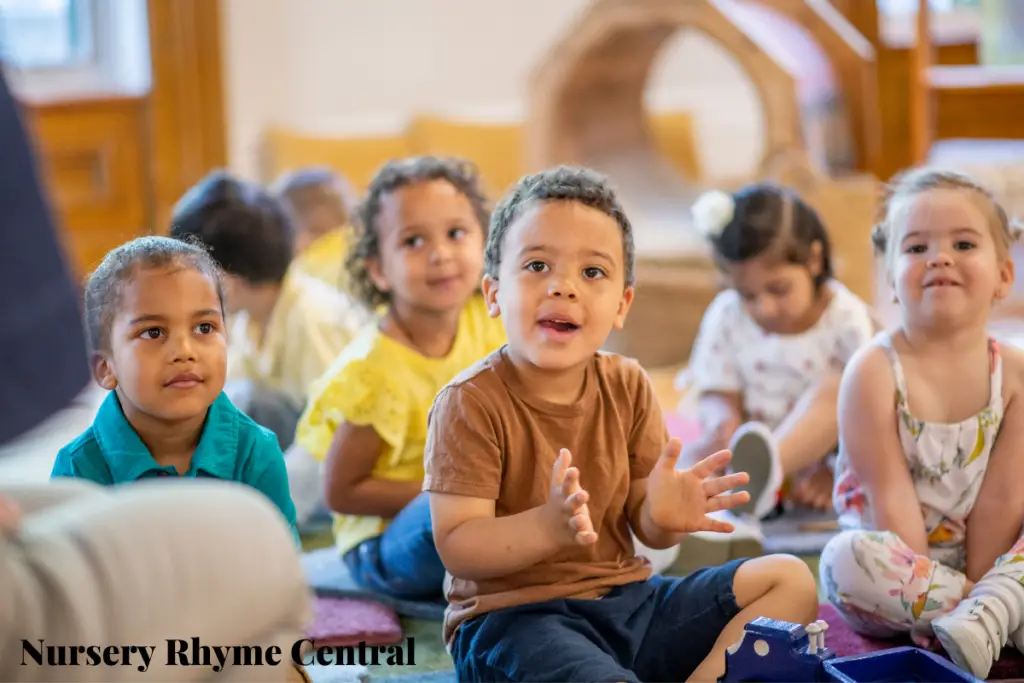
Nursery rhymes teach children to listen as well as to speak. The rhythmic nature of the nursery rhyme draws the child’s attention and locks them onto the teacher’s voice.
The child then wants to also be able to repeat and sing or say the rhyme and intently listen to be able to copy the words, which improves their listening skills.
The ability to listen to receive communications from others cannot be overstated when it comes to education.
But not only listening but also being able to apply what is heard into action. Nursery Rhymes are wonderful for this as children love to listen to them and naturally want to be able to replicate what they are hearing – thus actively putting what they are learning into action!
Learning to listen and wait your turn to speak is also an essential part of successful socialization. When learning Nursery Rhymes, the child naturally has to listen to all the person singing or saying the rhyme has to say to be able to gain the knowledge before trying it themselves.
They will find when they don’t take their turn to listen, they fail at being able to repeat what was heard, or they fail to follow the correct rhythms or melody and therefore they listen longer and more intently the next time.
Being able to repeat back what people say in a meaningful way is a vital communication skill, that relies on a person first being able to listen to what is being said.
7. Nursery Rhymes Help Develop Kids Thinking Ability
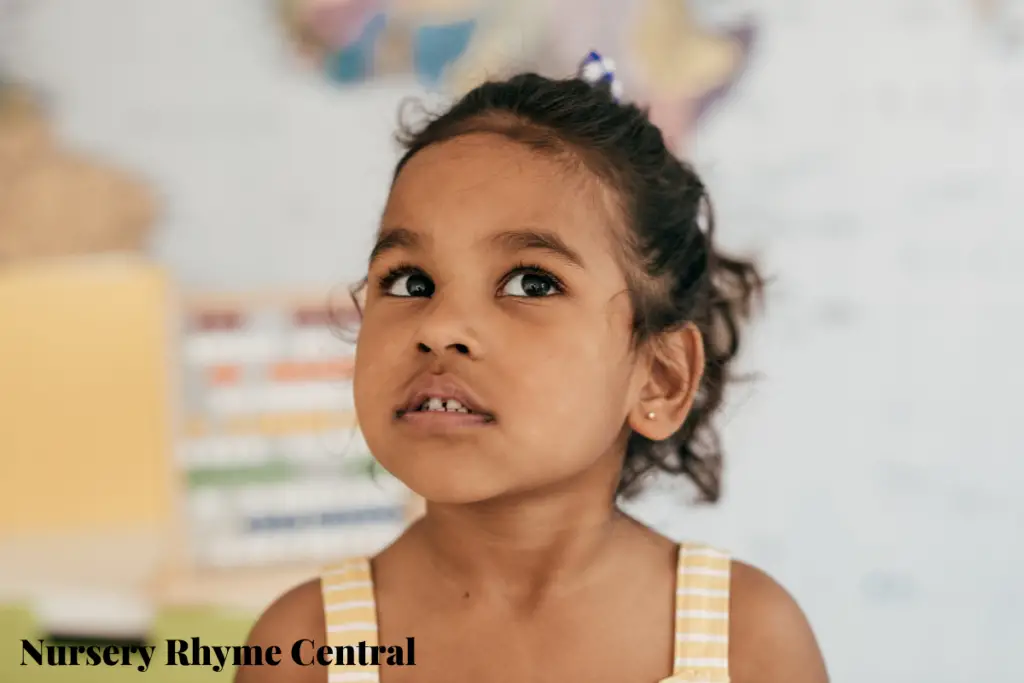
Cognitive development (thinking and learning) involves sophisticated neurological or brain processes.
Learning to memorize and recite Nursery Rhymes from a young age helps to develop and establish pathways in children’s brains that will enhance their ability to move smoothly along the continuum of language learning from oral speech to formal reading and writing.
Memory rhymes stimulate the imagination and introduce patterns that improve recall.
They also introduce the idea of a sequence of events – a beginning, a middle, and an end.
Pattern recognition plays a valuable role in developing numeracy skills and teaches concepts like ‘many’ and ‘few’. Some nursery rhymes teach children to count, add or subtract.
Nursery rhymes also foster the recognition of different shapes, spatial relations, and counting.
For instance, the Wheels on the Bus and The Moon is Round show spatial concepts. Jack and Jill or The Grand Old Duke of York draw attention to the directions up and down.
8. Nursery Rhymes Enhance Kids Physical Development
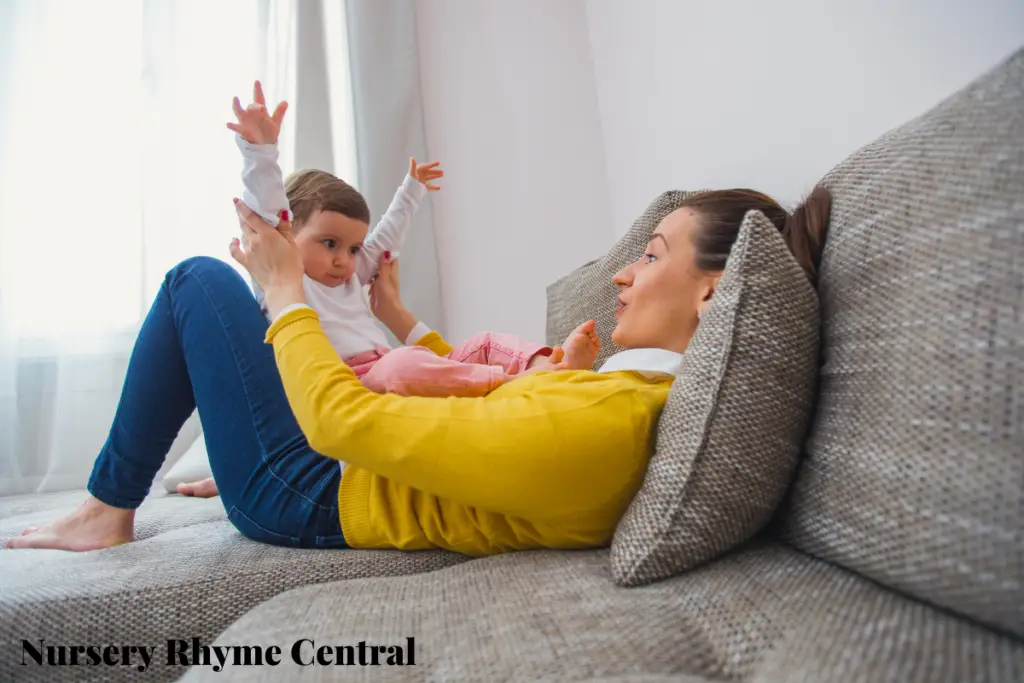
Many nursery rhymes require accompanying actions using legs, arms, hands, or feet.
This promotes coordination, balance, physical strength, and gross motor skills such as sitting, standing, skipping, running, dancing, jumping, and hopping.
Pat-a-cake, for instance, usually accompanies two children clapping each other’s hands as they recite the rhyme. It encourages social interaction, hand-eye coordination, and body awareness.
Gross motor skills involve the control of muscles in the arms, legs, and torso and the movement of large body parts. Physical stimulation combined with chanting helps the child to learn the nursery rhyme mentally on multiple levels.
Regular activity is essential for growing bodies and helps to prevents boredom within the learning environment. Gross motor skills are also the foundation for fine motor skills involving more delicate hand, finger, and wrist movements.
Babies love hand clapping rhymes and can be stimulated to bring their hands together between the ages of seven and nine months.
This movement is called crossing the midline by childhood development experts.
Finger wiggling can be encouraged by the rhyme Two Little Dickie Birds in which the index fingers of each hand are used to indicate the birds or by wriggling all fingers in Twinkle Twinkle Little Star.
Itsy Bitsy Spider is a finger song that requires a child to put their fingers together to represent the spider climbing up the waterspout and use their arms and hands to describe the rain and the sun.
I’m a Little Teapot also promotes body awareness by encouraging the child to imitate the handle and the spout using their arms.
Jack Be Nimble Jack Be Quick requires a child to jump over an object while Head, Shoulders, Knees, and Toes creates an awareness of body parts by requiring children to touch the relevant body part as they say the rhyme.
9. Nursery Rhymes Teach Musical Awareness
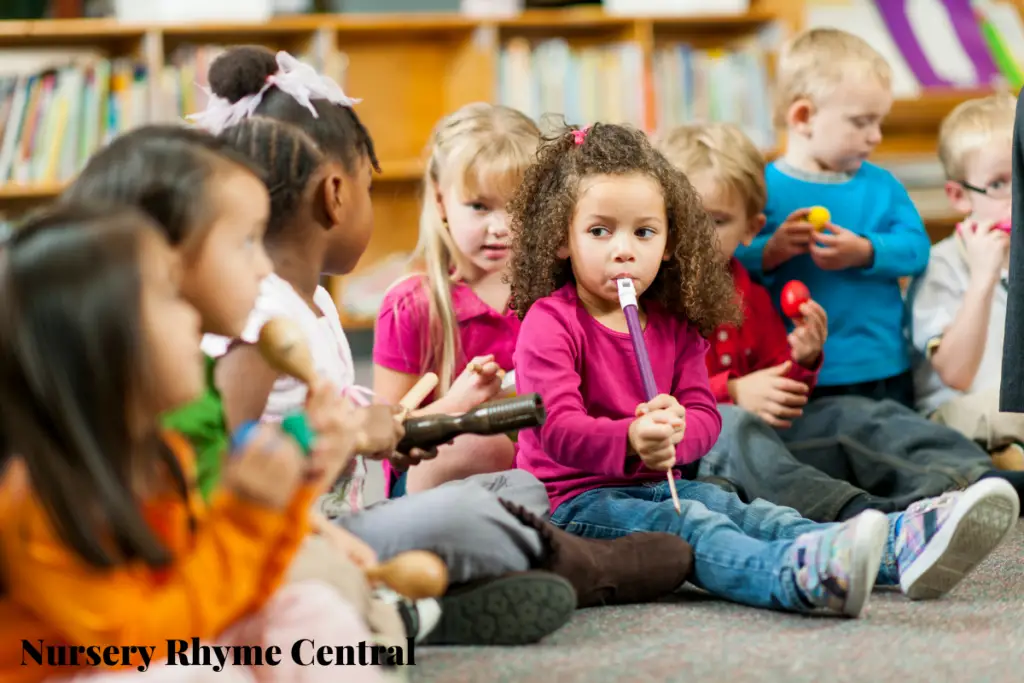
Many nursery rhymes are sung or chanted and can be a child’s first experience of music.
Hearing musical patterns in nursery rhymes stimulates aural pattern recognition, and a sense of timing and research has demonstrated a significant correlation between phonological awareness and musical ability. Music perception skills can predict reading ability in four- and five-year-olds.
Research from the early 1990s shows that exposure to music from early childhood helps children with speech, vocabulary, and social and emotional development.
When a child dances to the music, she develops improved motor skills while singing develops her vocal cords, listening skills, and musical ear. Most children respond positively to music and feel it emotionally and physically.
The brain’s left hemisphere expresses thoughts in words, while its right hemisphere is involved with problem solving, memory, and emotions.
The right hemisphere also processes music, promoting a balance with the heavily left-brained orientation of many educational approaches.
Songs and rhymes bridge the two hemispheres because the right brain learns the melody while the left learns the words.
Researchers have found that when a learning activity simultaneously combines the two hemispheres, productive learning occurs. Music is an invaluable key in whole-brain learning experiences.
10. Nursery Rhymes Stimulate Social Development
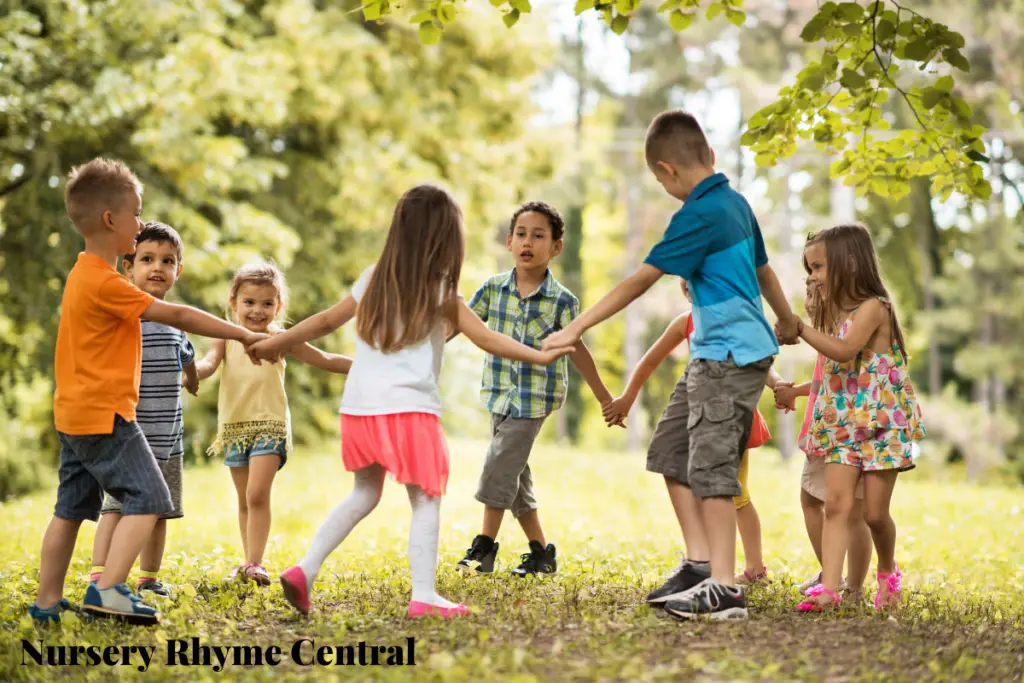
In group play, children learn to recite nursery rhymes while holding hands, dancing in a circle, or clapping together to the rhythm.
If children learn nursery rhymes like Ring A Ring A Rosie, they have an interactive game to play during break time. They learn to bond with each other emotionally and intellectually as they have something in common for example if a nursery rhyme is funny or silly they all laugh and giggle together.
For children who are naturally shy and introverted, this can help them make friends more easily and learn to play with others.
Children can bond over a story shared and have fun when reciting nursery rhymes together.
When an adult reads a rhyme to a pre-literate child, the bond between them is strengthened, and the child feels cared for and attended to.
This can be because during this time the adult has to concentrate on the task of singing and making hand movements and is not easily distracted by other priorities.
The adult is focused on the child or children and meeting them at their developmental stage and level.
11. Nursery Rhymes Convey Information About The World
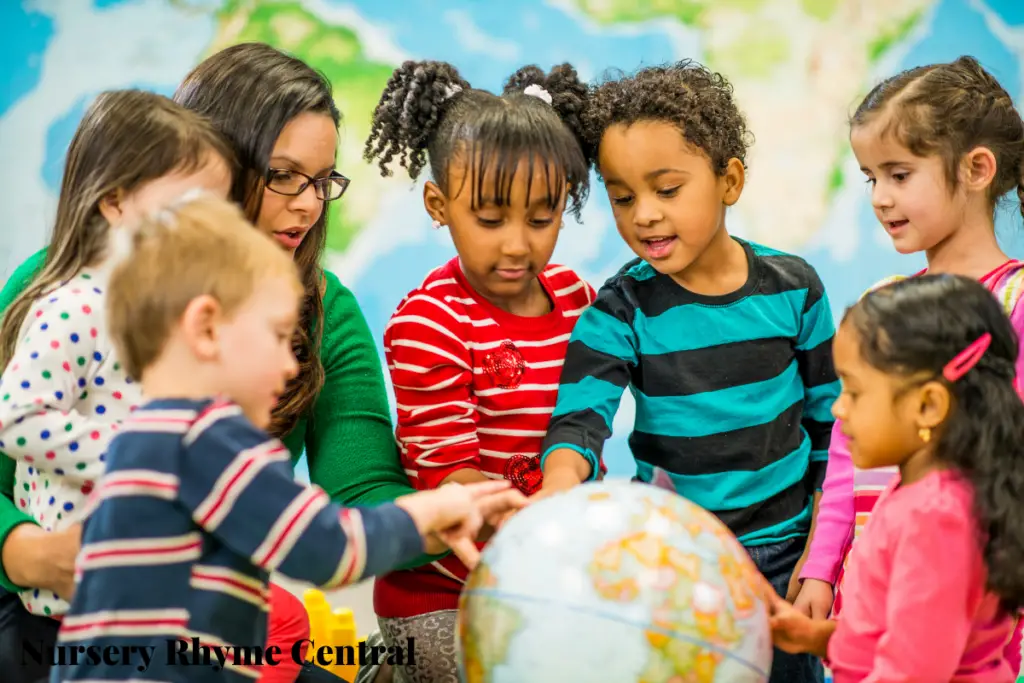
A significant amount of information can be conveyed to a small child about the world from learning simple nursery rhymes.
Shapes, colors, days of the week, numbers, and social norms are often sung about in rhymes for example, One Two Buckle My Shoe teaches numbers and counting while Rain Rain Go Away and Itsy Bitsy Spider teach about the weather. How Many Miles To Babylon and Pussy Cat Pussy Cat teach distance and travel.
Children learn about nature, time, seasons, and animals in nursery rhymes. Birds fly, fish swim, can a cow jump over the Moon?
These are all world connections that are the same from the past and the present. Nursery Rhymes can also teach about occupations such as Little Bo-Peep Has Lost Her Sheep, the baker makes a cake in Pat-a-cake, Simple Simon met a Pieman, and Miss Polly Had A Dolly who goes to the Doctore. To Market to Market introduces the concept of commercial transactions.
Five Red Ladybugs Climbing Up a Door and Five Green and Speckled Frogs teach counting and subtraction.
Baa Baa Black Sheep teaches the color black while Hickory Dickory Dock teaches about clocks and telling time.
Lavender’s Blue Dilly Dilly teaches the colors blue and green and describes farming activities such as cutting corn and making hay.
Twinkle Twinkle Little Star draws a child’s attention to the sky while Billy Boy and Frog Went A-Courting teach about courtship and romantic love. J
ohny Johny Yes, Papa, teaches that telling lies is not acceptable. There are many modern nursery rhymes as well as traditional ones that contain these themes.
Nonsense rhymes encourage a sense of humor.
The delightful Dr. Seuss with his ‘One Fish Two Fish Red Fish Blue Fish’ is beloved by children and adults, as are the nonsense rhymes of Edward Lear (The Owl and The Pussycat) and Jabberwocky by Lewis Carroll. Hey Diddle Diddle is an example of a traditional nonsense rhyme.
Time to Share your Learning…
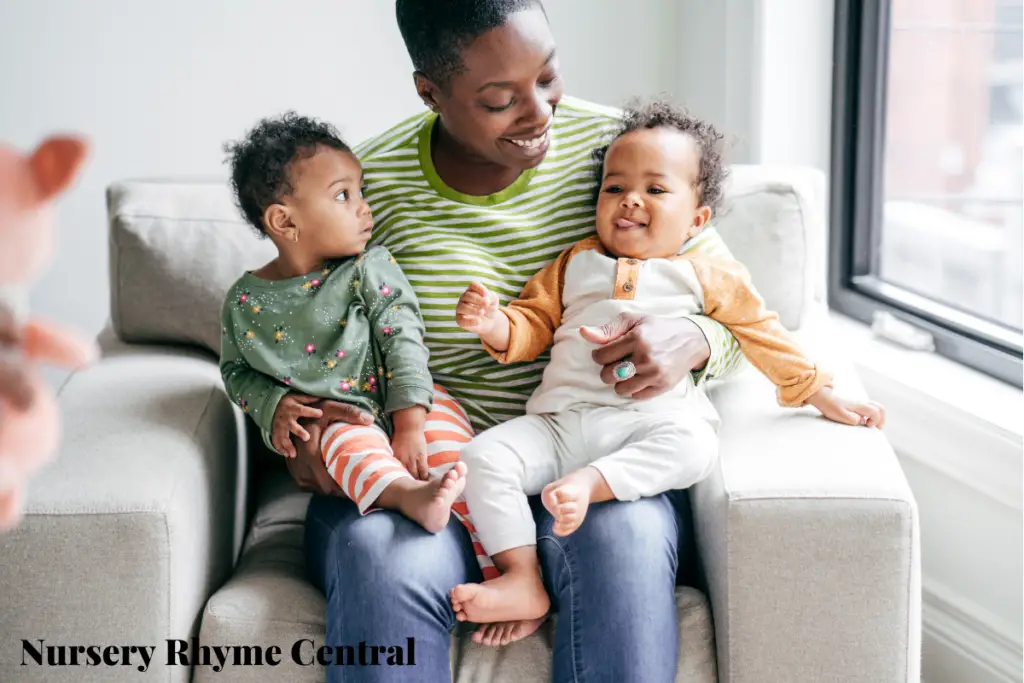
Reading, singing, and teaching nursery rhymes to young children have significant and demonstratable educational value on many levels. They provide positive learning experiences for young children with short attention spans and light relief in the classroom.
Parents, Grandparents, Carers, and anyone who looks after young children should introduce them to nursery rhymes when they are young to encourage their development of neural links and pathways in the brain that will help enhance their ability to learn educational skills such as reading and writing in the future!
References
JOURNALS/RESEARCH
Dunst CJ, Meter D and Hamby DW (2011)’ Relationship Between Young Children’s Nursery Rhyme Experiences and Knowledge and Phonological Print-Related Abilities’ https://www.researchgate.net/publication/320332692_Relationship_Between_Young_Children’s_Nursery_Rhyme_Experiences_and_Knowledge_and_Phonological_and_Print-Related_Abilities
Harper, L. J. (2011). Nursery rhyme knowledge and phonological awareness in preschool children. The Journal of Language and Literacy Education [Online], 7(1), 65-78. http://jolle.coe.uga.edu/archive/2011_1/harper.pdf
Rohde, L. (2015). The comprehensive emergent literacy model: Early literacy in context. SAGE Open Journal, 5(1). https://journals.sagepub.com/doi/full/10.1177/2158244015577664
Phillips B, (2008), ‘Successful phonological awareness instruction with preschool children’ Topics in Early Childhood Special Education, 2(1), 3-17.
Mullen G ‘More Than Words: Using Nursery Rhymes and Songs to Support Domains of Child Development’ Journal of Childhood Studies 2017 Vol 42 No. 2
Pourkalhor O and Tavakoli MA, Nursery Rhymes and Language Learning: Issues and Pedagogical Implications’ (2017) International Journal of English Language & Translation Studies http://www.eltsjournal.org/archive/value5%20issue1/14-5-1-17.pdf
Ipung Sri Purwanti Hery and Imran Arshad, Using Nursery Rhymes to Enhance Vocabulary among Young English Learners in Indonesia, International Journal of Management, 11(9), 2020, pp. 212-226. https://www.researchgate.net/publication/344320593_Using_Nursery_Rhymes_to_Enhance_Vocabulary_among_Young_English_Learners_in_Indonesia
Anvari SH, Trainor LJ, Woodside J, and Levy BA,’ Relations Among Musical Skills, Phonological Processing, And Early Reading Ability In Preschool Children’ J Exp Child Psychology 2002 Oct; 83(2):111-30.
Steinbrink C, Knigge J, Mannhaupt G, Sallat S, Werkle A. ‘Are Temporal and Tonal Musical Skills Related to Phonological Awareness and Literacy Skills? – Evidence From Two Cross-Sectional Studies With Children From Different Age Groups’ Front Psychol. 2019 Apr 16;10:805.
WEBSITES
https://www.nidcd.nih.gov/health/speech-and-language
https://allnurseryrhymes.com/a-was-an-apple-pie/
https://novakdjokovicfoundation.org/importance-music-early-childhood-development/
https://interestingliterature.com/2019/05/10-of-the-best-nonsense-poems-in-english-literature/
BOOKS
W Schiller Thinking Through The Arts 2004
